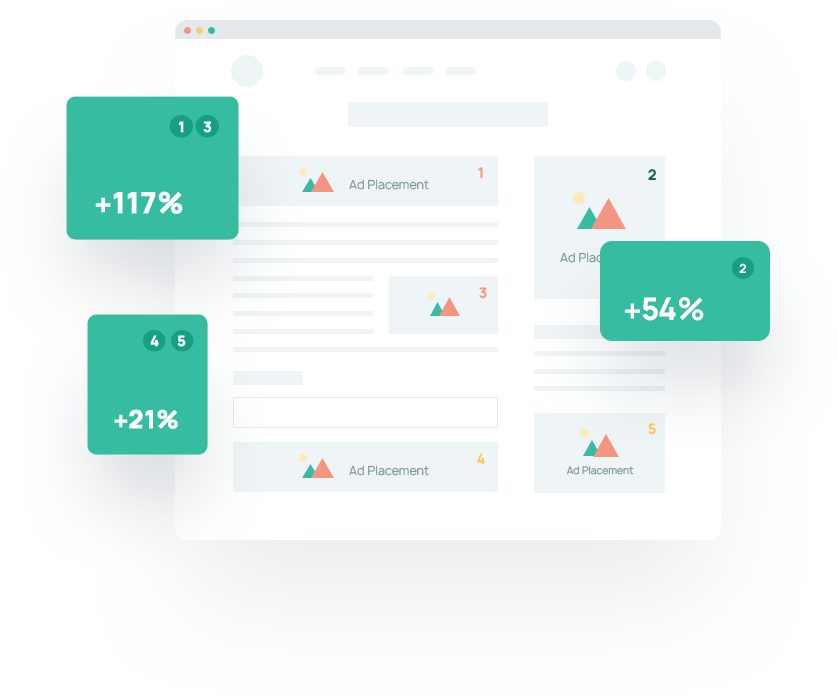Working with affiliate programs helps you earn a passive income because other people click on your links, make purchases, and you get a commission. When you partner with companies you love, sending your traffic to an affiliate landing page is easier because your appreciation comes through. Your followers trust you, increasing your conversion rates.
You don’t have to make a unique website to create an effective affiliate landing page. WordPress is one of the best hosts, with stunning page layouts to help your site stand out.
What Is an Affiliate Landing Page?
A landing page is a single page that tells the visitor exactly what they need to know without making them search an extensive website. There’s no extra information on the page—only what the visitor needs to follow the page’s call to action (CTA). An affiliate landing page is a specific location that inspires your traffic to click on affiliate offers to generate passive income.
You can create a landing page for your affiliate product without building an entire eCommerce website. There are WordPress themes specifically designed for landing pages, so you can draft an affiliate marketing landing page in minutes.
The ideal landing page gives the visitor the information they need with no distractions, which will increase your conversions, generate new leads, and produce more passive income.
How To Make an Affiliate Landing Page Effective
While you don’t want to put too much distraction and imagery on an affiliate landing page, you want to ensure your viewers understand what you’re offering and follow through on your CTA. These tips will help you create the best landing page.
Have a Simple Design
A simple design ensures no distraction when visitors try to read the text and follow links to your affiliate products. WordPress themes are simple, so you can choose one and change the colors to suit your style or the product, creating an attractive page. Consider complementary colors and use bold fonts to make your CTA stand out.
Attention Grabbing Headers
High-converting landing pages use action verbs in the headlines to grab attention and hook the reader so they spend more time on the page, continue reading, and eventually click through the CTA. Always draft several versions of your headers before choosing which will pop and ensure visitors follow through.
Clear CTA
You need clear verbiage for your call to action and a CTA button that stands out from any other text or design on the page. Many affiliate landing pages use the CTA more than once, so people can easily click the button as they scroll without needing to return to the top. Use a contrasting color for the button to demand attention on the site.
Use Images To Match the Content & Product
While a clean and simple design is ideal, images and visual elements make your page look more engaging. Use images of the affiliate product or related visuals to stay on theme and not distract from your CTA. You can find a WordPress plugin to help you manage images and galleries.
Add in Social Pages
As with any web page, you want to link your social media outlets so people can connect with you on other platforms. These links will also serve as social proof, showing your target audience that you’re real and inspiring them to relate to you.
Build Trust and Show the Benefits
The biggest lead generation key is building trust with your target audience. No one likes interacting with someone focused on sales, so you want to interact with your followers. As they learn more about you and how you back the product, they’ll trust you.
What Are the Benefits To Putting Ads on Affiliate Pages?
With an affiliate landing page, you earn a commission when potential customers click through your affiliate link and complete a purchase. However, you can put ads on your affiliate page to earn even more money, regardless of whether the visitor follows your CTA.

Ads earn less than an affiliate commission, but any passive income is worth it. You get paid based on revenue per thousand impressions (RPM), so you can earn different amounts based on your monthly traffic and how many visitors click on the ads.
This marketing strategy can benefit you because people click on your landing page and spend time there, so you can make money from the ad revenue. Even if they don’t follow your affiliate link, they may interact with the ads, so you’ll earn passive income from that outlet.
If some affiliate products are seasonal items, adding ads to your affiliate pages will increase your year-round income potential when you can’t earn commissions. Best of all, if a visitor completes a purchase through your affiliate link, you’ll earn a commission from the program plus income from the ads, so you’re not as dependent on conversion rates.
How Can Ads Impact Affiliate Sales?
Putting ads on your affiliate landing page requires a delicate balance. You don’t want to overwhelm the page with ads and negatively impact the functionality. You want the best landing page with ad integrations that suit the affiliate program. Too many ads may bother the user and make them leave the page.
However, putting ads on your affiliate landing pages increases your income potential. Even if a visitor doesn’t click through your affiliate link, you can make money from their page visit.
What Ad Types Won’t Impact the User Experience?
You can integrate different types of ads into your page design, so choose some that won’t put off potential customers or negatively impact the loading speed. For example, pop-ups often interrupt a visitor as they scroll your page, so you should consider less invasive options, such as banners or sticky ads that won’t block the content.
Conclusion
Affiliate marketing is a great way to earn passive income. Creating a landing page for digital marketing allows you to optimize your earnings, especially if you integrate ads into the design. Always test your landing page before sending it to your target audience to ensure they can see your CTA and click through your affiliate link.

One Comment
Comments are closed